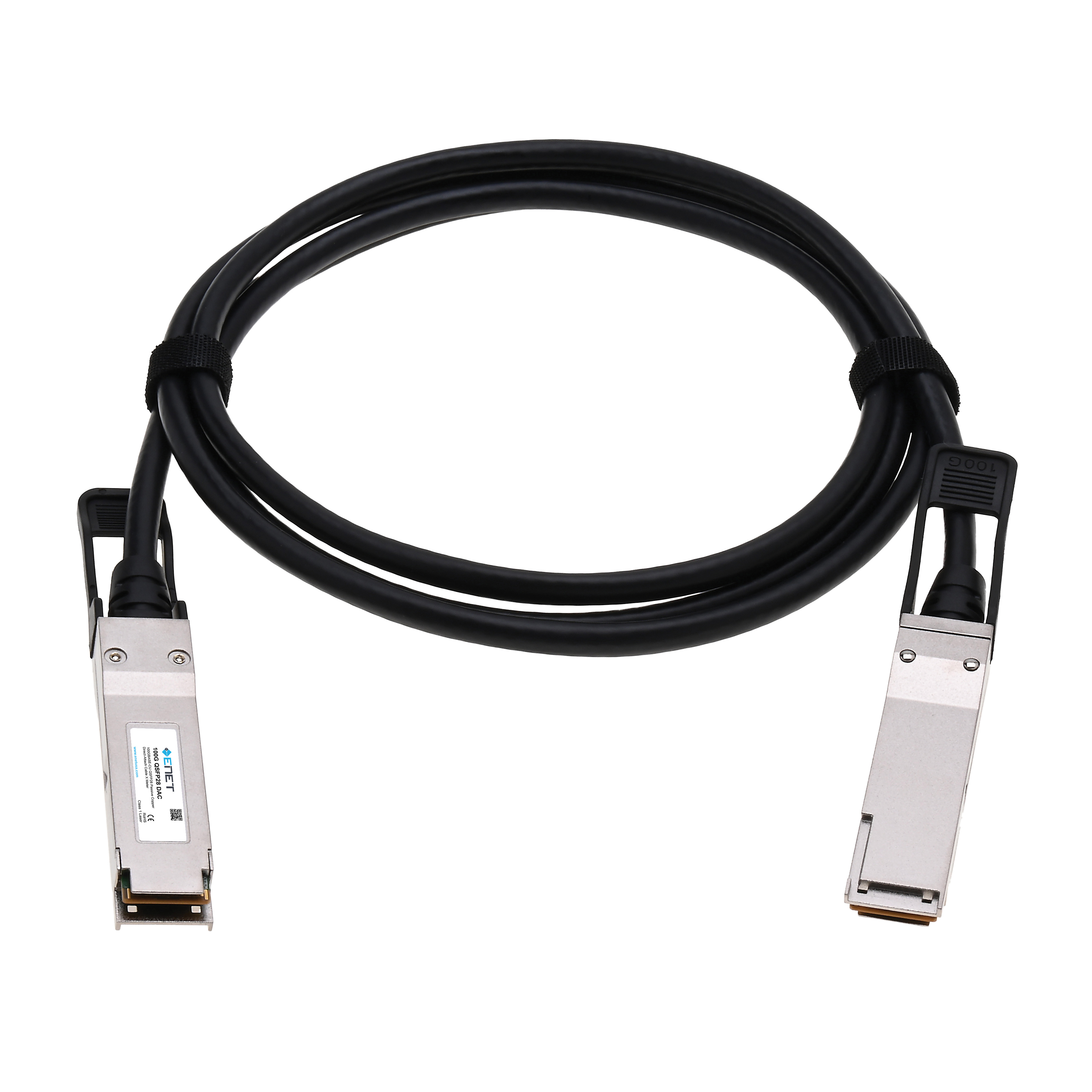The field of Artificial Intelligence (AI) is rapidly evolving, with new developments surfacing almost every day. From the debut of OpenAI’s ChatGPT to Microsoft’s GPT-4 and Google’s Bard AI Chatbot, AI has captivated the public’s imagination and holds the potential to transform various aspects of our lives. In fact, the global AI market is projected to be valued at 142.3 billion U.S. dollars in 2023, with industries such as finance, healthcare, and high-tech/telco leading the adoption of AI technologies.
Within the realm of data centers, AI is already playing a significant role. It is being utilized for the monitoring of data center assets, proactive fault detection, and optimization of energy efficiency through better management of Power Usage Effectiveness (PUE). Notably, not only hyperscalers but also many large enterprise companies are harnessing the power of AI in their operations.
The Role of Cabling in AI Networks
Many of today’s AI networks rely on InfiniBand technology, which competes with the prevailing Ethernet standard used in most data centers. While Ethernet dominates the market, InfiniBand holds a small fraction of the market share, primarily in High-Performance Computing (HPC) networks. However, a competition is emerging between InfiniBand market leader Nvidia and prominent Ethernet switch and chip manufacturers like Cisco, Arista, and Broadcom.
Regardless of the chosen protocol, both InfiniBand and Ethernet require high bandwidth and low latency to ensure optimal performance. This highlights the importance of deploying top-tier optical cabling solutions that can meet the demands of AI networks.
Power and Bandwidth Challenges in AI Data Centers
AI applications in data centers, such as Nvidia’s DGX platform, come with skyrocketing demands for power and bandwidth. Supercomputers equipped with GPUs for AI applications consume vast amounts of power, ranging from 6.5kW to over 11kW per 6U unit. This is significantly higher than the average power consumption of data center cabinets, which typically range from 7-8kW and max out at 15-20kW per cabinet.
In terms of bandwidth, GPUs used in AI applications require multiple high-bandwidth connections. For example, Nvidia’s DGX GPUs typically require up to 8x100Gb/s (EDR) or 200Gb/s (HDR) connections per GPU, summing up to 8x200G per GPU. These demands for power and bandwidth pose significant challenges for data center operators.
Redesigning Data Center Infrastructure for AI
The power and cooling requirements of AI applications are pushing network managers to reconsider their infrastructure designs. To accommodate the intense computing needs and mitigate heat dissipation challenges, data center operators are spacing out GPU cabinets further and considering End of Row (EoR) configurations. This creates an increased physical gap between switches and GPUs, necessitating the use of more fiber cabling.
While direct attach cables (DACs) are commonly used in data centers, they are limited to short distances of 3 to 5 meters at most for high-speed connections. As a result, data center operators are turning to active optical cables (AOCs) that can cover greater distances while consuming less power and offering lower latency compared to transceivers. AOCs, combined with fiber cabling, provide a feasible solution for extended switch-to-GPU links.
Transitioning to Higher Bandwidths
As data centers adapt to meet the increasing bandwidth demands of AI applications, the transition to parallel optic technology becomes crucial. Parallel fiber optic technology, utilizing multi-fiber push-on connectivity (MPO/MTP fiber connectors), allows for the higher bandwidths required by AI networks. These solutions, such as MPO Base-8, facilitate the adoption of both multimode and single-mode fiber, enabling a smooth migration to higher speeds.
For enterprise data centers upgrading to 100Gb/s and 400Gb/s, a Base-8 MPO OM4 cabling solution is recommended. On the other hand, cloud data centers transitioning to 400Gb/s and 800Gb/s speeds should consider a Base-8 MPO single-mode cabling solution. These solutions provide the necessary infrastructure to support the increasing bandwidth demands of AI networks.
Innovative Fiber Enclosure Systems
To support the flexibility and scalability required by AI networks, innovative fiber enclosure systems are emerging in the market. These systems can accommodate different fiber modules, including Base-8 and Base-12 with shuttered LC, MTP pass-thru modules, and splicing modules. By providing easy access and improved cable management, these enclosure systems facilitate the efficient deployment and maintenance of fiber cabling in AI data centers.
The Importance of Low Latency and Fiber Performance
In the realm of AI applications, low latency plays a crucial role in ensuring optimal performance. To meet the stringent latency requirements of AI networks, it is recommended to adopt ‘AI-Ready’ solutions that incorporate ultra-low loss (ULL) fiber performance alongside MTP/APC connectors. Ultra-low loss fiber connectivity is particularly important for short-reach single-mode applications, supporting speeds of 100, 200, and 400 Gb/s over distances exceeding 100 meters.
In addition to ultra-low loss fiber, the use of angled physical connect (APC) fiber connectors, including the MTP/APC variant, is advised for specific multimode cabling applications. The angle-polished end-face configuration of APC connectors reduces reflectance, enhancing overall fiber performance.
Embracing the AI Revolution
AI stands as a disruptive technology with the potential to transform various industries and aspects of our lives. As data center operators prepare for the demands of AI, it is crucial to undertake timely infrastructure modifications to accommodate the power and bandwidth requirements of AI applications. By embracing AI’s requisites and focusing on energy efficiency, data center operators can position themselves to leverage the opportunities and benefits that come with AI’s evolutionary journey.
Conclusion
Cabling plays a critical role in meeting the demands of AI data center clusters. As the field of AI continues to expand, data center operators must adapt their infrastructure to accommodate the power and bandwidth requirements of AI applications. This includes deploying top-tier optical cabling solutions, spacing out GPU cabinets, and utilizing parallel optic technology. By considering innovative fiber enclosure systems, low latency solutions, and the use of ultra-low loss fiber and APC connectors, data centers can ensure optimal performance and meet the challenges posed by AI. As the AI revolution continues to unfold, embracing the demands of AI will position data center operators for success in this transformative era.




